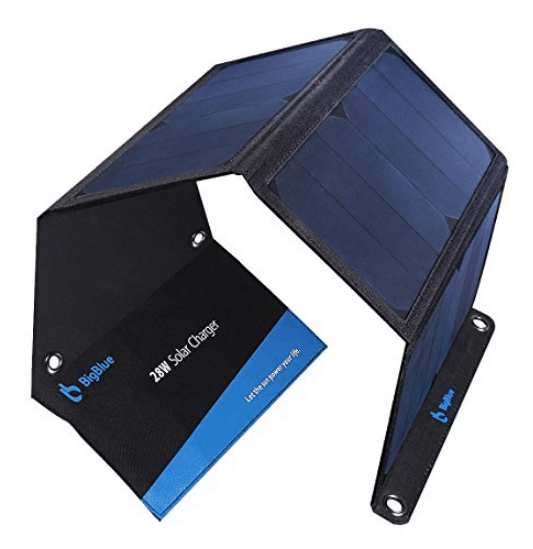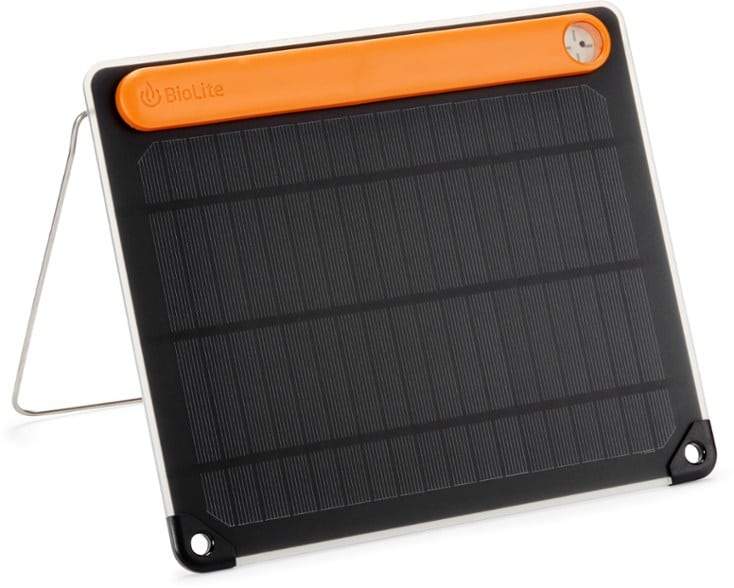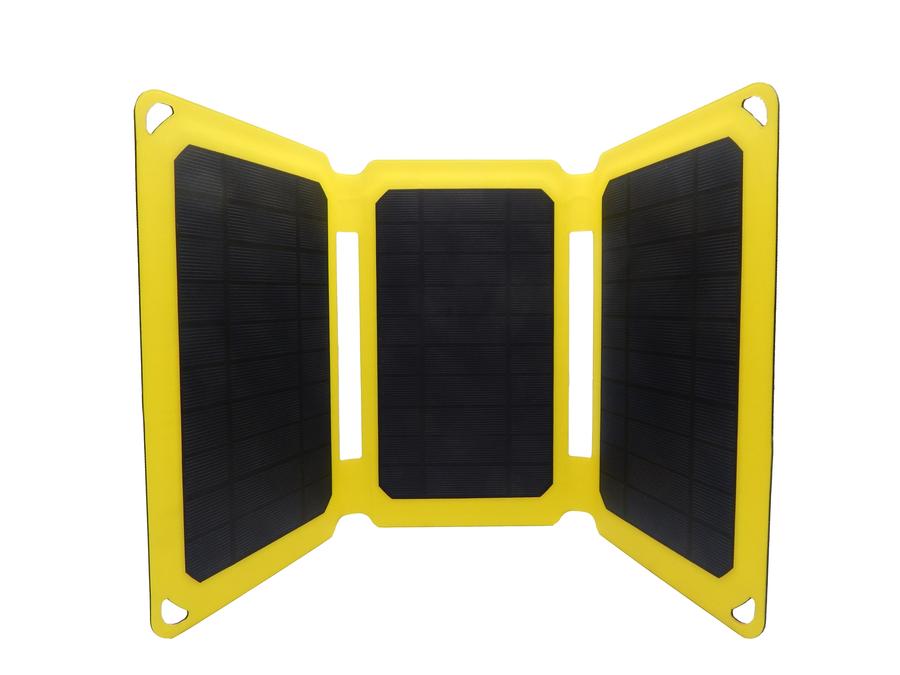Solar chargers have come a long way, and now they are more useful than ever. If you are not aware already, the best options around can now recharge your phone when the sun is out, even if they might not be as fast as an AC adapter. They will definitely come in handy during outdoor activities like hikes and camping trips, and we have the best options in our list of
1. BigBlue 28W Solar Charger:

As you already know, the higher the wattage a solar charger can supply, the faster it’s able to charge a device. This is why BigBlue 28W Solar Charger is a massive value for money as it provides the best price-performance ratio of any consumer solar charger around.
Must Read: 6 Best Solar-Powered Gadgets For A Wireless Summer
Charging is practical with this one, and it doesn’t take too much space. The charger doesn’t come with a built-in battery, but it is home to 3 ports (two 2.4-amp and one 1-amp port) for connecting up to three devices at once.
2. Anker 21W 2-Port USB Portable Solar Charger:

This one is made of the same industrial-strength polymer fabric as the option above and folds up to the same 11×6-inches for travel and storage. However, it opens up with just three panels, meaning it is a more compact 26 inches long. It is also home to 2 USB charging ports, and it is very portable.
3. BioLite SolarPanel 5+:

This option comes with its own kickstand for orienting it on the ground for charging, and the stand can also be used to hang it if needed. What makes it really unique is its little sundial that can be used to locate the best angle for soaking up sun rays.
Must Read: 7 Best Phones For Construction Workers
It also comes with a 2,200-mAh battery built-in, and a USB port to connect your phone or other devices. You can only expect 5 watts of charging power, though.
4. Blavor Solar Power Bank:
The solar cells on the top of this power bank aren’t big enough to charge your phone in an afternoon, and the solar charging is supplemental at best, but it still serves some people.
Must Read: You’ve Been Charging Your Battery The Wrong Way All Along
It comes with a juicy 10,000-mAh battery and can be used as a fallback when there is no other option. Just give it some days, and it will surely charge the integrated battery or your mobile devices.
5. SunJack 15W Solar Charger:

This 3-panel solar charger is rugged, weatherproof and very portable. It folds up to just 10.5×6.5 inches and is only an inch thick while delivering a decent 15 watts of power.
It clips seamlessly to your backpack, and that will allow you to soak in sunlight while hiking. It is covered in ETFE, a fluorine-based plastic, which provide more durability than many other materials, plus it is waterproof.
There you have it – a comprehensive list of best solar battery chargers for your gadgets. If you have any personal favorite or other recommendations, feel free to drop them in the comment section below.
More Information On Gadget:
A gadget is a small tool such as a machine that has a particular function, but is often thought of as a novelty. Gadgets are sometimes referred to as gizmos.
In the software industry, “Gadget” refers to computer programs that provide services without needing an independent application to be launched for each one, but instead run in an environment that manages multiple gadgets. There are several implementations based on existing software development techniques, like JavaScript, form input, and various image formats.
The earliest documented use of the term gadget in context of software engineering was in 1985 by the developers of AmigaOS, the operating system of the Amiga computers (intuition.library and also later gadtools.library).
It denotes what other technological traditions call GUI widget—a control element in graphical user interface. This naming convention remains in continuing use (as of 2008) since then.
It is not known whether other software companies are explicitly drawing on that inspiration when featuring the word in names of their technologies or simply referring to the generic meaning. The word widget is older in this context.
In the movie “Back to School” from 1986 by Alan Metter, there is a scene where an economics professor Dr. Barbay, wants to start for educational purposes a fictional company that produces “widgets: It’s a fictional product.”



